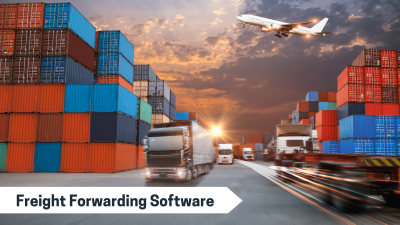2016 was the year that marked great changes for Logistic providers with the implementation of IoT and Augment Reality into operations. But, 2017 is the year that will mark great advancements for the industry. Out with the old tactics, in with the new technology.
Internet of Things (IoT) in Logistics
Internet of Things intelligently bridges people, processes, data and things via devices and sensors. In logistics it helps bring automation to manufacturing processes and improves warehouse visibility. IoT in supply chain can connect different devices in a meaningful way and then analyze the data generated from these connections to capture new heights. It enables logistics providers to unlock higher levels of operational efficiency, while creating customized, dynamic and automated services to the customer.
In the next couple of years, investment in IoT technology will almost triple from $7 billion to $20 billion by 2020. This high increase makes you believe that the Internet of Things might be more than just a cool way to connect devices. Well, it is.
Supply chains, for example can use IoT-enabled devices to:
- Ensure temperature stability
- Manage warehouse stock
- Identify product issues and resolve them in time, thereby, reducing asset loss
- Leverage fleet routes by monitoring traffic conditions and saving fuel expenditure
- Know more about customer behavior and product usage
- Eliminate driver shortages and deliver products on time
- Meet increasing government regulations
However, unfortunately about 1/4 of supply chain companies still don’t really understand what IoT really is or what it could do for them. With the benefits and competitive advantage that IoT offers it’s kind of hard not to look into its possibilities.
In the area of Supply Chain, IoT plays a crucial role by providing In-Transit visibility. Cloud-based GPS and Radio Frequency Identification, RFID, make part of the Internet of Things that provide identity, location and tracking information on shipments. But also, collects data through the GPS and RFID in order to help obtain data visibility of an item from a manufacturer to a retailer. Such data also helps supply chain professionals automate shipping and delivery with exact time predictions. But, this technology is always expanding its reach to do more, especially when:
- Sensor prices have dropped to less than $10 per unit.
- The smartphone culture grows so does IoT
- GPS technology is being replaced with multi-dimensional location sharing through cellular location and WiFi
- Big Data analytics, delivery performance, shipment visibility and real-time response to supply chain demands are top priorities for logistics.
As the usefulness of IoT grows to meet industry demands, companies continue to look for other technologies that can enhance their operations and get them ahead of the crowd. One of those technologies that seems to be growing steadily along with IoT is Augment Reality. We have discussed the Augmented Reality through the eyes of manufacturing, but its also quite useful in Logistics.
Augmented Reality (AR) in Logistics
Augmented reality in logistics lets consumers visit places from their home, review products in 3D and interact with the virtual world. This kind of technology has been great for the entertainment and retail industries. However, it had been neglected in logistics until now. Augmented reality has recently gained much needed upgrades, lower costs and the ability to handle multiple processes.
These recent advances have led to AR becoming a topic of conversation for logistic companies. Warehousing operations for example account for over 11% of logistics costs. By implementing AR applications workers can use headsets to complete tasks 30% faster and more accurately than workers with traditional training.
Companies that have already implemented AR into their operations are reaping the benefits. Hence, the fast uphill investment in these technologies. More and more logistic companies are seeing the results through their competitors and now want a piece of the action. AR applications and IoT devices can ultimately cut transport costs, raise productivity and will eventually help code and manage freight with less touch points.
Just like IoT and Augmented Reality, BoxOn Logistics can play a key role in enhancing your logistic operations. BoxOn Logistics was developed by Iblesoft, a software development company that works with the newest technology to develop business solutions. So start using technology as a solution to improve your business.
Contact Us for more information or schedule a FREE BOXON DEMO.






COMMENTS